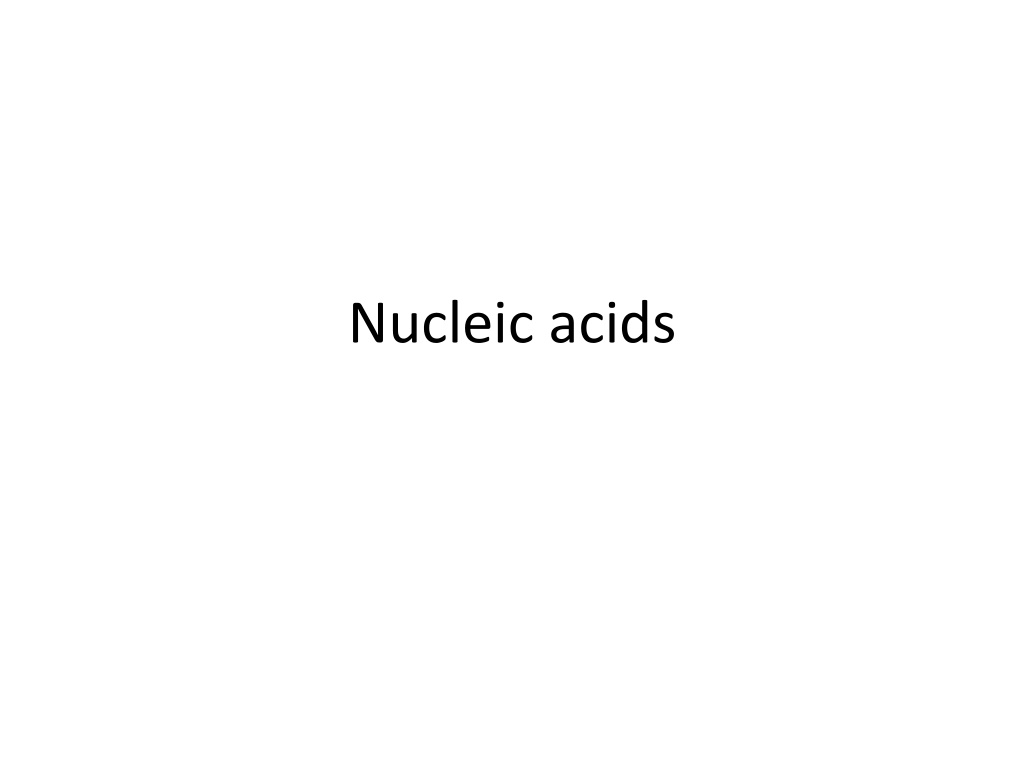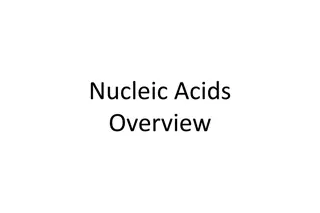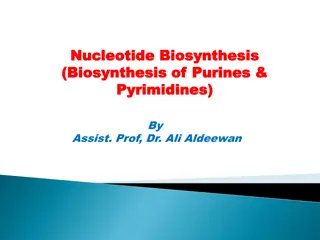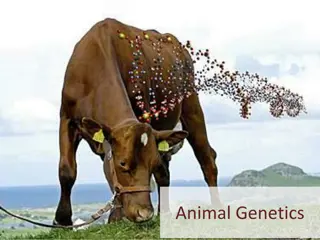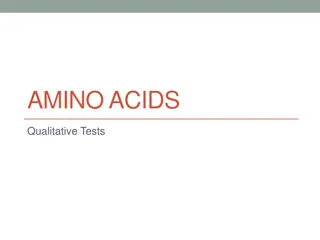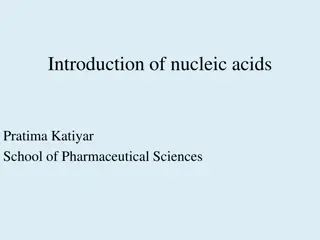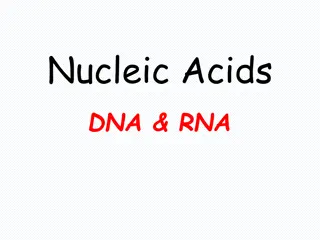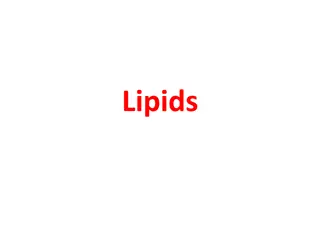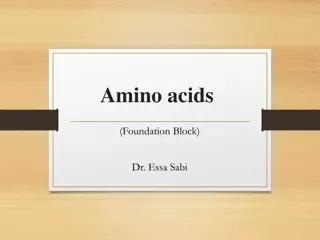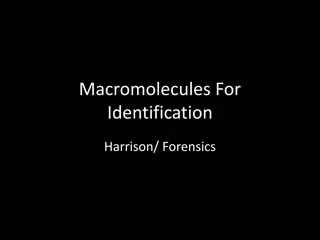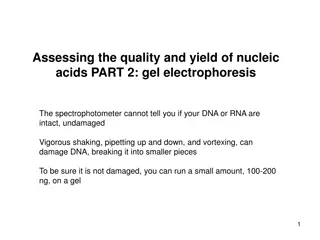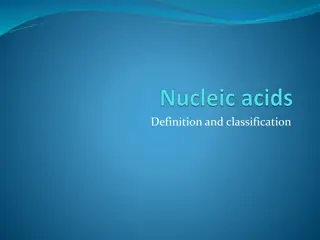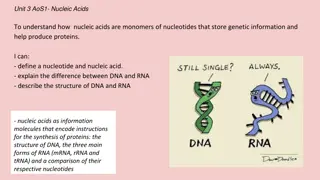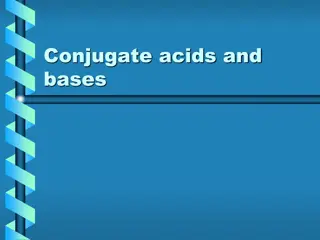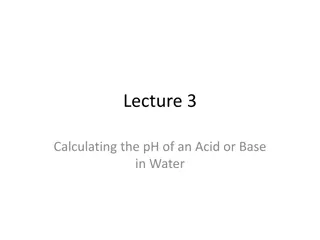Understanding Nucleic Acids: Key Properties and Functions
Nucleic acids, including DNA and RNA, are fundamental molecules in all life forms, serving as hereditary determinants in cells. They are composed of nucleotide units, each containing a sugar, amine base, and phosphate group. The structure of DNA, with its double-stranded helix model, reveals specific base pairings and hydrogen bond interactions. Discover the essential roles and properties of nucleic acids that govern genetic information in living organisms.
Download Presentation

Please find below an Image/Link to download the presentation.
The content on the website is provided AS IS for your information and personal use only. It may not be sold, licensed, or shared on other websites without obtaining consent from the author. Download presentation by click this link. If you encounter any issues during the download, it is possible that the publisher has removed the file from their server.
E N D
Presentation Transcript
Nucleic Acid Definition Nucleic acids are essential large biological molecules for all forms of life. The nucleic acids include the DNA and the RNA. They are the hereditary determinants of living organisms. They are present in most living cells either in Free State or bound to proteins as nucleoproteins. The nucleic acids are biopolymers with mononucleotides and their repeating units. The monomers are known as nucleotides, they are made up of three units: a sugar, an amine base and a phosphate group.
Properties of nucleic acids are as follows: Nucleic acids (DNA and RNA) are long polymers made of repeating units of nucleotides. Nucleotide units are made of phosphate-sugar- nitrogenous base units. The nitrogenous bases found in DNA are adenine, guanine, cytosine and thymine. Adenine and guanine are purine bases while cytosine and thymine are pyrimidines. In RNA, the thymine bases are replaced by uracil which is also a pyrimidine. The nucleotides are linked with phosphodiester bonds.
They are linked by a phosphate group on the 5th position of sugar residue becomes linked to 3' hydroxyl group of the proceeding sugar molecule. The double stranded model of the DNA was worked out by Watson and Crick in 1953. The double helix model consists of two strands wound around a central axis with the bases stacked inside. The order of the strand is in opposite directions, i.e., from 5' to 3' direction in one and 3'to 5' direction in the other. The bases stacked in the center of the helix as they interact with each other through weak hydrogen bonds.
Hydrogen bonds are weaker than covalent bonds, they are continually forming and disassociating. In the double stranded nucleic acids, the adenine form hydrogen bonds only with thymine (or uracil) molecule. While cytidine will only form hydrogen bonds with guanine. Hence, in a given strand of DNA, the amount of adenine is always equal to the amount of thymine, and the amount of cytidine always equals the amount of guanine, in a given species. The percent of the G-T and the A-T is variable from species to species. The base pairs form a flat plain in the helix, the adenine forming two hydrogen bonds with thymine, and the cytidine forming three bonds with guanine. The double stranded DNA can be denatured by alkaline conditions or heat.
DNA (deoxyribonucleic acid) DNA is one of the macromolecules; they are essential to all living forms. Deoxyribonucleic acid contains the genetic information; it is used in the development and functioning of all living organisms. The DNA segments carry genetic information is called the genes. Other DNA segments have structural functions or regulate the genetic information. DNA is made of two chains made of polymer units of nucleotides. The backbones of DNA are made of sugar and phosphate groups which are joined by ester bonds. The two strands of DNA are anti-parallel, they run in opposite directions.
Each four nucleobases. The nucleobases encode genetic information, that is read using the genetic code. Inside the cell, the DNA is arranged in long structures called chromosomes. The chromosomes are duplicated in the process of DNA replication, during cell division. Each cell has its own one complete set of chromosomes. In eukaryotic organisms, most DNA is stored in the nucleus of the cell, and also some of it in cellular organelles like mitochondria or chloroplast. The prokaryotes store the DNA in the cytoplasm. Chromatin proteins like histones compact and organize the DNA sugar molecule is attached to one of the
RNA (ribonucleic acid) The functions of ribonucleic acid is to convert genetic information from genes into amino acid sequences of protein. In some viruses, RNA contains the genetic information. RNA is of three types, they are tRNA (transfer RNA), mRNA (messenger RNA) and rRNA (ribosomal RNA). Messenger RNA, as the name suggests acts a messenger. It carries genetic information sequences between DNA and ribosomes, and it also directs protein synthesis. rRNA is a major component of the ribososmes, they catalyze the formation of peptide bond. The tRNA act as a carrier molecule for the amino acids that are used in protein synthesis. The tRNA are also responsible for decoding the mRNA.
